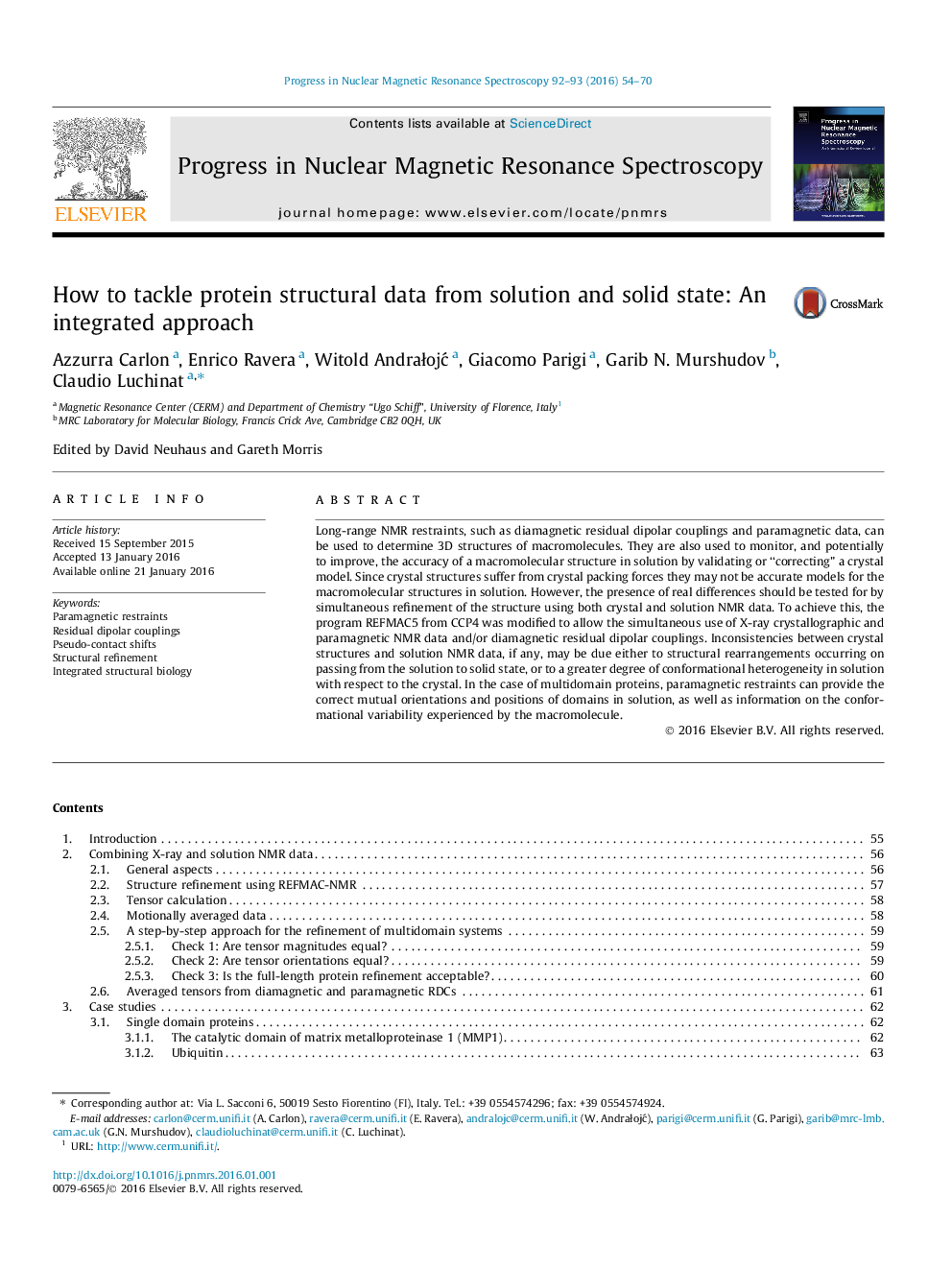| Article ID | Journal | Published Year | Pages | File Type |
|---|---|---|---|---|
| 5419508 | Progress in Nuclear Magnetic Resonance Spectroscopy | 2016 | 17 Pages |
â¢X-ray and solution NMR data can be used jointly for refinement of macromolecular structures.â¢REFMAC-NMR is used for a step-by-step refinement of multi-domain systems.â¢Criteria to analyse discrepancies between solution and crystal data are examined.â¢The approach is applied to several single- and multi-domains proteins.
Long-range NMR restraints, such as diamagnetic residual dipolar couplings and paramagnetic data, can be used to determine 3D structures of macromolecules. They are also used to monitor, and potentially to improve, the accuracy of a macromolecular structure in solution by validating or “correcting” a crystal model. Since crystal structures suffer from crystal packing forces they may not be accurate models for the macromolecular structures in solution. However, the presence of real differences should be tested for by simultaneous refinement of the structure using both crystal and solution NMR data. To achieve this, the program REFMAC5 from CCP4 was modified to allow the simultaneous use of X-ray crystallographic and paramagnetic NMR data and/or diamagnetic residual dipolar couplings. Inconsistencies between crystal structures and solution NMR data, if any, may be due either to structural rearrangements occurring on passing from the solution to solid state, or to a greater degree of conformational heterogeneity in solution with respect to the crystal. In the case of multidomain proteins, paramagnetic restraints can provide the correct mutual orientations and positions of domains in solution, as well as information on the conformational variability experienced by the macromolecule.
Graphical abstractDownload high-res image (270KB)Download full-size image
